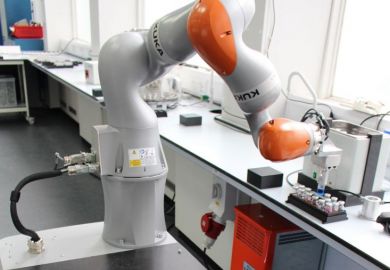Over the past 30 years, there have been dramatic changes in the dynamics of the computing and communications industries. Open Innovation takes on the task of describing these changes and of formulating a new paradigm for how research and development should be done in the future if corporations are to be successful. For the author, Henry Chesbrough of Harvard Business School, the term "open innovation" means that companies view the entire world of R&D as the basis for opportunities and ensure that products can be tested with the appropriate business models rapidly and efficiently. I found Chesbrough's description of what has changed accurate, although I would put a different emphasis on the causes.
Since the Second World War, the number of scientists and engineers has grown enormously. There has also been an even more rapid development in our knowledge of science and engineering. The technical depth of every level of industrial production has increased to the point that it has become impossible for any one company to have sufficient resources to create everything that makes up a given product. These factors have led to an explosion of suppliers/buyers at every level of production - from devices, to components, to systems and software. The result is that it is much easier to innovate at any of these levels, by using suppliers from a lower level. This led to the growth of venture capital where new innovations and business models can be easily tested.
Chesbrough's exploration of today's high-tech world follows an excellent analysis of what went wrong at the Xerox lab in Palo Alto, where many new and innovative inventions had no effect on the Xerox business. He explains this lack of success as the result of the Xerox business model being based on selling and leasing photocopiers to large corporations. The new innovations of the Palo Alto lab did not fit this model and were successful only when taken out of Xerox and used to create companies with different approaches to the market.
Chesbrough goes on to discuss the changes that have occurred at IBM and Intel. IBM was a vertically integrated company until the 1980s. As the decade progressed, it became clear that vertical integration would no longer work, that the various component and device units of IBM needed to compete in the open market and that the systems units of IBM needed to buy from the best suppliers, which were not always internal suppliers. At the same time, it was realised that IBM research could not continue to support long-term research that did not affect the company's bottom line. This led to a number of changes that closely coupled the research organisation with the various business units of IBM so that new innovations could move rapidly into the market. In the new IBM, each unit can try out business models that are appropriate for its products.
Intel's approach to R&D derives from the fact that Bell Labs and IBM were doing most of the longer-term research needed to keep the semiconductor industry moving along the Moore plot - for ever smaller devices in integrated circuits. So Intel started with a narrow approach to R&D and mixed R&D and production engineers on production lines. Today, this situation no longer exists. Intel has adopted an open approach to R&D investment in which it funds whatever it believes to be the best approach to new innovations, whether it comes from inside or outside the company.
Chesbrough relates the management view a little too uncritically. And interestingly, he does not discuss the biggest changes that have occurred in the two companies and how they fit into his model of open innovation: that is, the growth of the service sector at IBM and the change from a dynamic random access memory business to a microprocessor business at Intel. But the book accurately describes the high-tech world of today.
W. F. Brinkman is a senior research physicist, Princeton University, US, and former vice-president of research, Bell Labs.
Open Innovation: The New Imperative for Creating and Profiting from Technology
Author - Henry Chesbrough
Publisher - Harvard Business School Press
Pages - 225
Price - £21.99
ISBN - 1 57851 837 7


